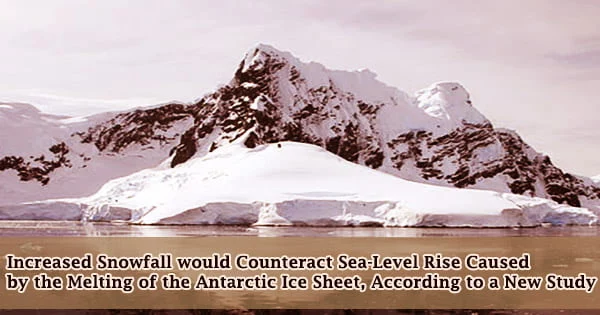According to a recent study, any sea-level rise on the world’s southernmost continent will be offset by an increase in snowfall, which is linked to a warmer Polar climate. Researchers observed that the two ice sheets of Greenland and Antarctica respond differently to predicted increases in sea levels, reflecting their extremely diverse local climates.
The research, which was published today in Geophysical Research Letters, is based on a new generation of climate models that were used in the recently released Intergovernmental Panel on Climate Change (IPCC) Sixth Assessment Report, which reviewed scientific, technological, and socioeconomic data on climate change.
For the first time, the initiative gathered together over 60 researchers from 44 universities to develop process-based community forecasts of ice sheet sea-level rise. This study focuses on one component of the larger project: how the new generation of climate model forecasts used in current IPCC assessments differs from the earlier generation in terms of the ice sheet effect.
Snowfall patterns differ by location. Both total snowfall and the fraction of precipitation falling as snow have decreased in the Pacific Northwest. Parts of the Midwest have also seen a drop in snowfall, notably in the snow-to-precipitation ratio. A few locations, such as those around the Great Lakes, have witnessed small increases, with some receiving more snow than in the past.
The team was attempting to determine if the anticipated sea-level rise from the current generation of climate models differed from the prior generation, according to Professor Tony Payne, Head of Bristol’s School of Geographical Sciences. “The new models generally predict more warming than the previous generation but we wanted to understand what this means for the ice sheets,” he said. “The increased warming of the new models results in more melt from the Greenland ice sheet and higher sea level rise by a factor of around 1.5 at 2100.”
“The anticipated sea level increase from the Antarctic ice sheet, on the other hand, hasn’t changed much. This is due to the fact that greater mass loss caused by warmer seas is offset by increased snowfall, which is linked to a warmer Polar atmosphere.”
Glaciers all across the world, as well as the Greenland and Antarctic ice sheets, hold a substantial portion of the Earth’s freshwater. Water pours into the seas when the glacier melts or calves, raising sea levels. Global sea level would increase by more than 195 feet if all glaciers and ice sheets disappeared (60 meters).
The new findings imply that civilization should prepare for rising sea levels, and they are consistent with nearly all prior predictions of sea-level rise, which predict that sea levels will continue to increase long beyond 2100, most likely at an accelerated rate.
Prof Payne added: “Predicting the mass budget of the ice sheets from estimates of global warming is difficult and a great many of the processes involved require further attention.”
“Discovering that warmer climates do not affect the Antarctic mass budget, in particular, warrants further examination because this is based on large changes in snowfall and marine melt balancing.”
“One of the main things to take away from this, interestingly, is that the response of two ice sheets and what impact global heating has on them is different and depends heavily on their local conditions,” said Prof Payne.
Antarctica is on track to become essentially ice-free if temperatures rise by more than 10 degrees Celsius over pre-industrial levels. The temperature sensitivity of the ice sheet is 1.3 meters of sea-level equivalent per degree of warming up to 2 degrees Celsius above pre-industrial levels, nearly doubling to 2.4 meters per degree of warming between 2 and 6 degrees, and increasing to around 10 meters per degree of warming between 6 and 9 degrees.
The International Panel on Climate Change (IPCC) and the US National Climate Assessment both agree that ice loss has been the most significant contribution to sea-level rise in recent decades and will continue to do so for the next century.
















